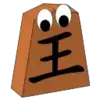The puzzle here ( en.lichess.org/training/27989 ) has a problem I have not run into so much on lichess but it is common on a lot of tactical training sites. The perfect solution is very complex with a 9 move variation to finally win the queen with a million different viable options including numerous inferior pawn, piece, and exchange wins before that. However, on move two of the combination the computer sees the 9 move queen win variation follows quickly by mate as well and so gives away its queen on move 2 completely ruining the value of the problem.
Perhaps there should be a way to report problems that should have a human override the computer solution?
As another little issue, I don't think it's very appropriate for this problem to have been selected as an "easy" problem for me. I understand it's rating relative but it's inappropriate going from mate in 2 to 'that' in the same problem set.
Perhaps there should be a way to report problems that should have a human override the computer solution?
As another little issue, I don't think it's very appropriate for this problem to have been selected as an "easy" problem for me. I understand it's rating relative but it's inappropriate going from mate in 2 to 'that' in the same problem set.

